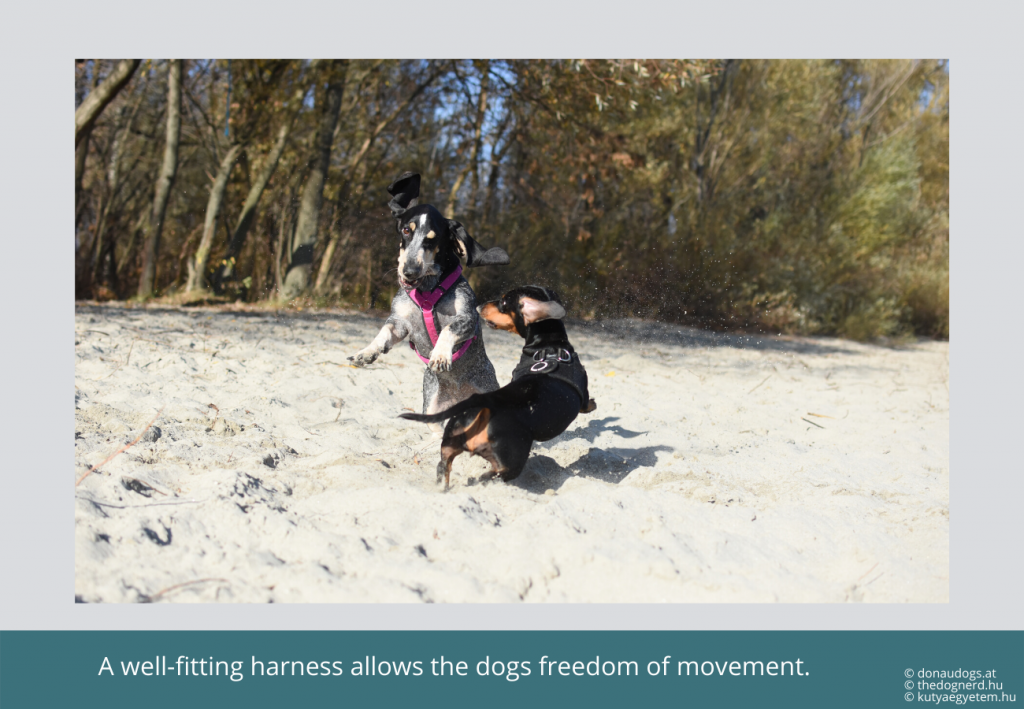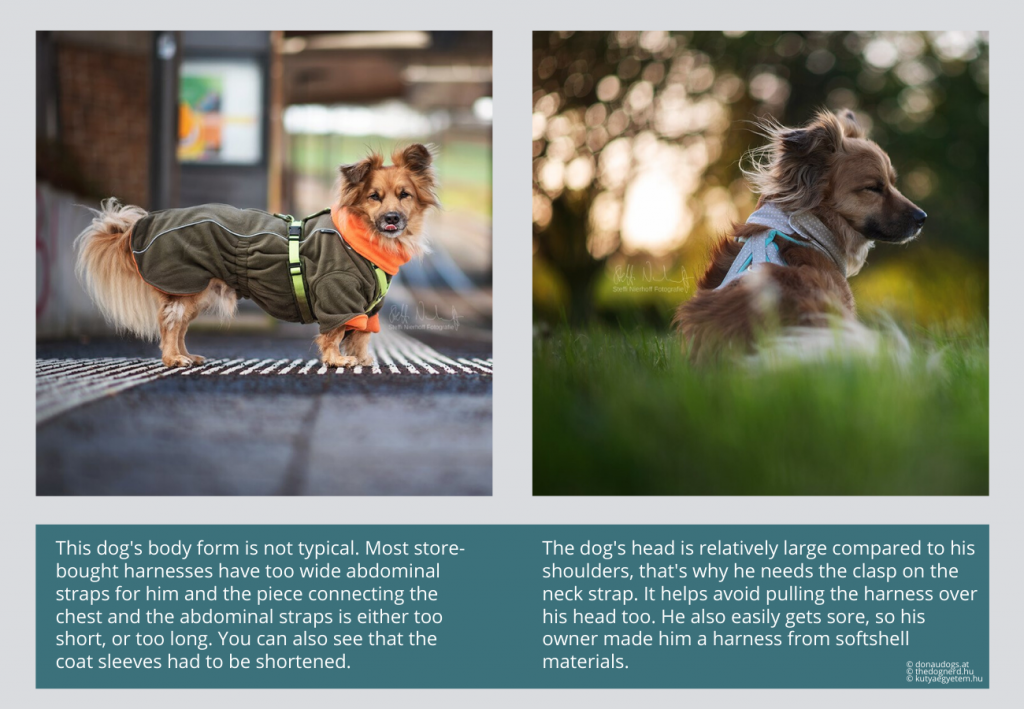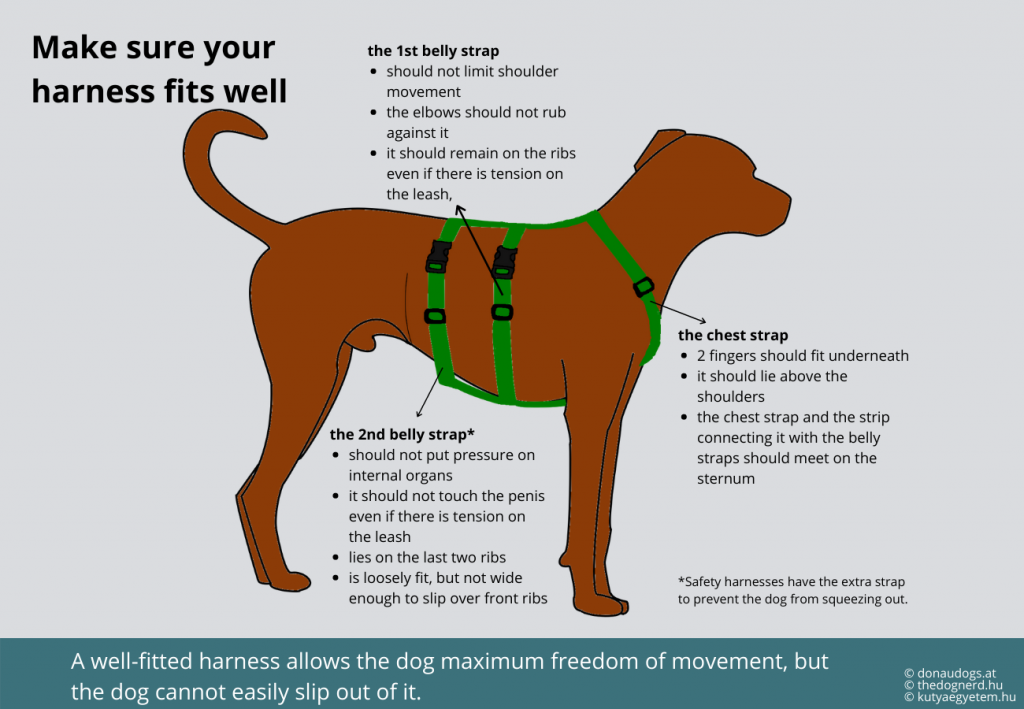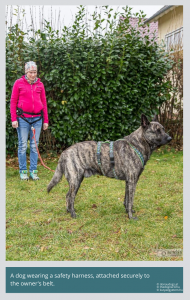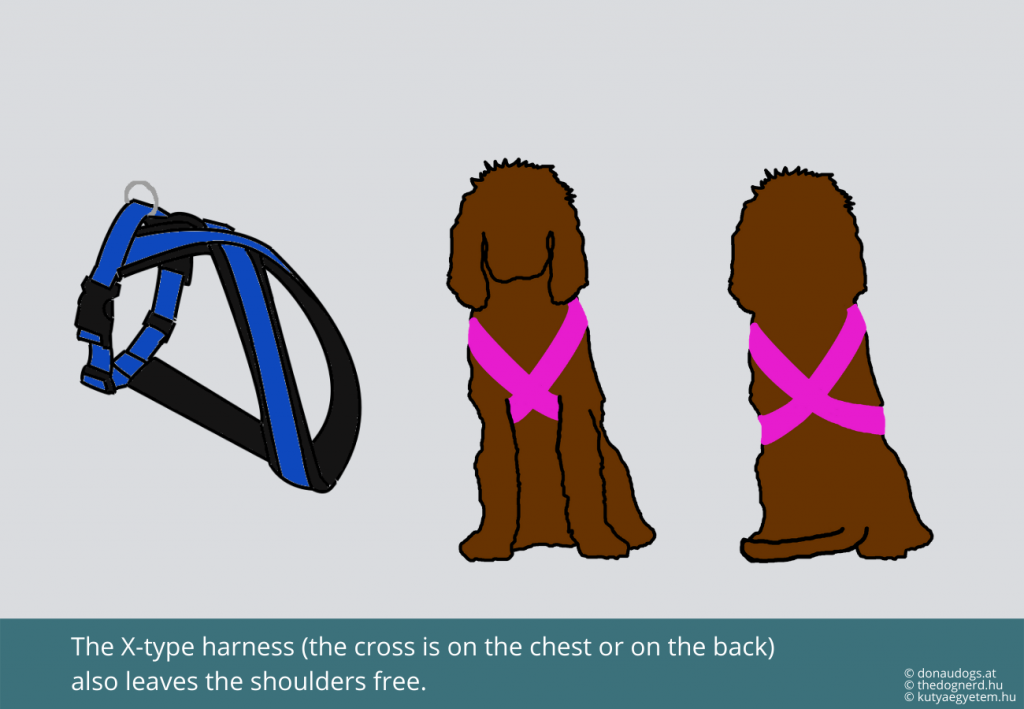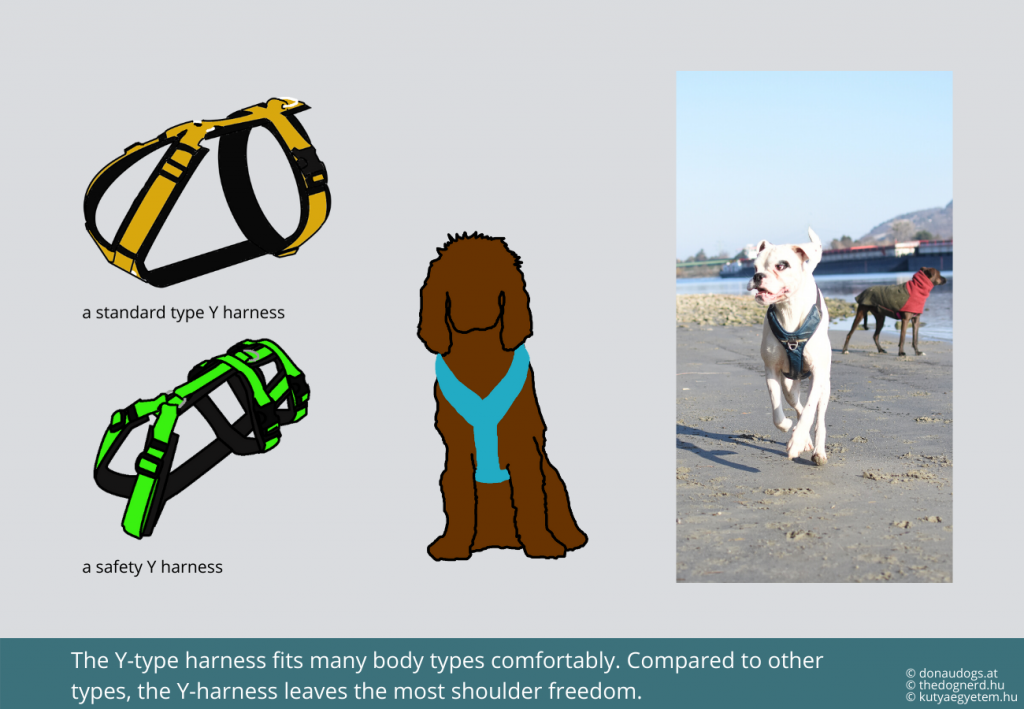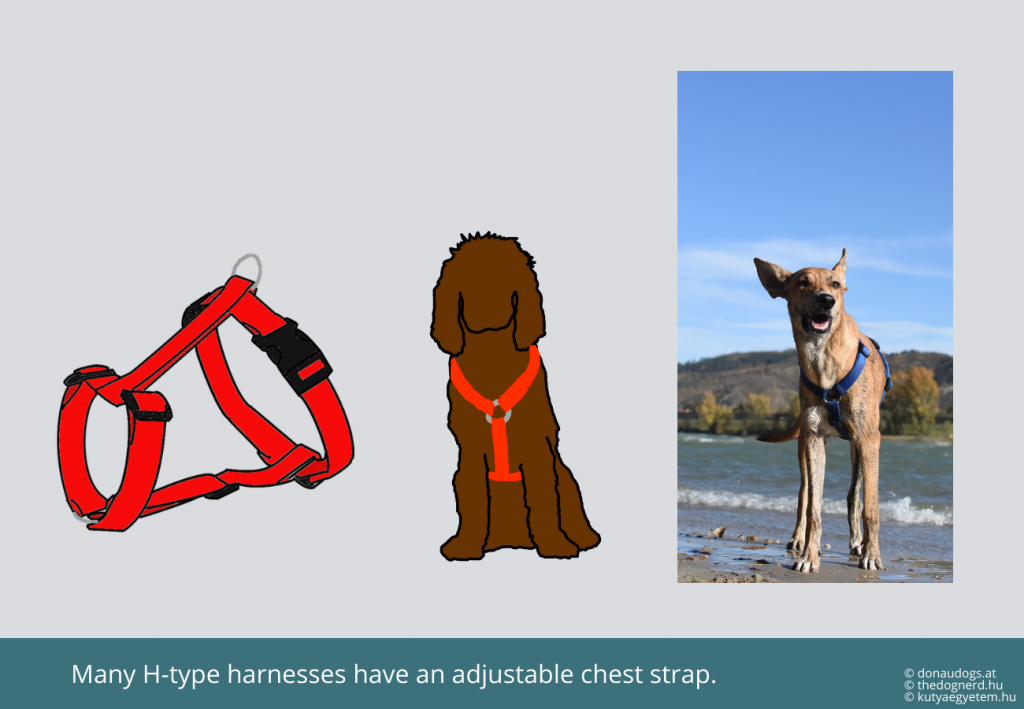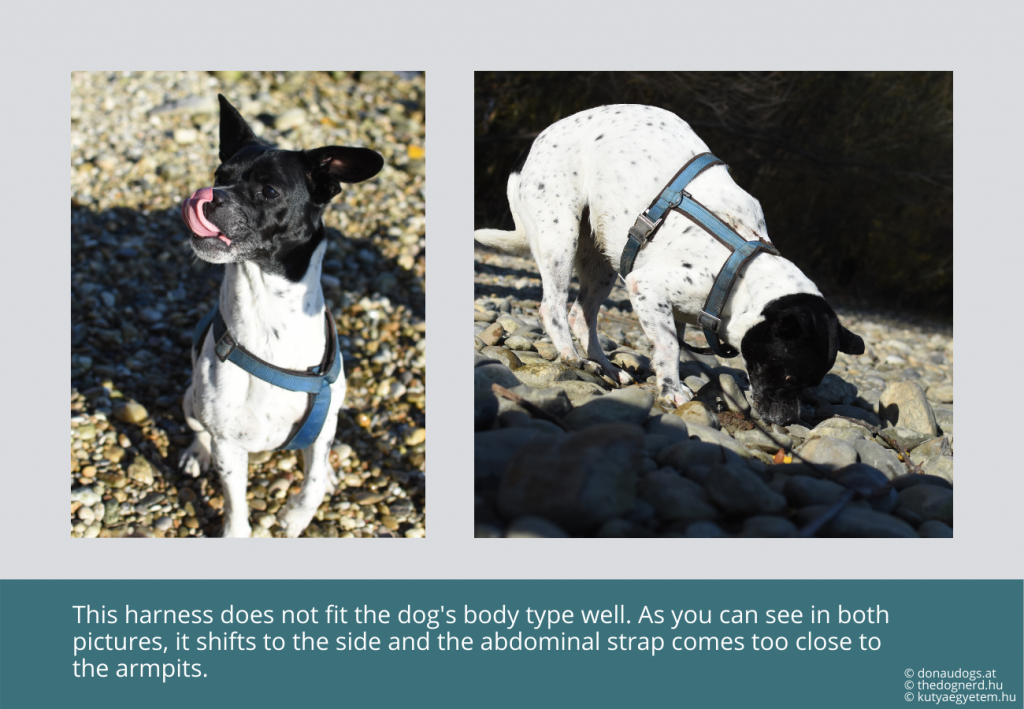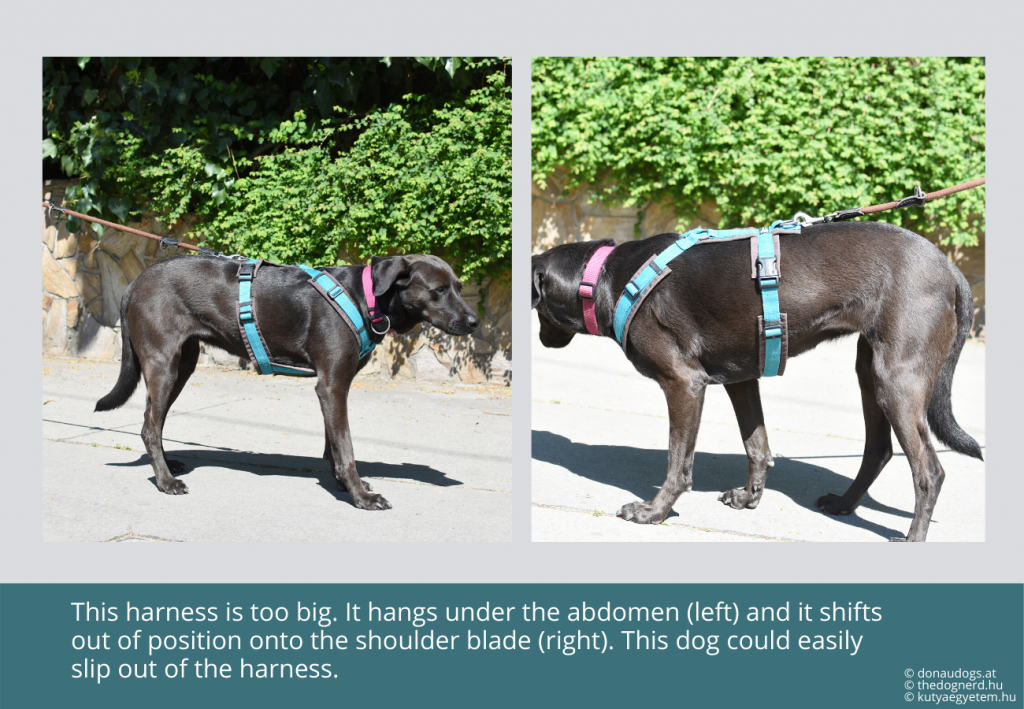Introduction
The harness vs. collar debate sometimes sounds like a religious war but there are pros and cons to both. If you’re considering buying a harness, this post will help make an informed decision.
We will talk about harness types for everyday use:
-
- H-, Y- and X- type harness
- Norwegian type harness
- Step-in harness
- Safety harness
We won’t talk about sports’ (for example canicross) harnesses. The forces involved in sports are much stronger and it is paramount that the harness fits perfectly. Ask a competent trainer for help!
General pros and cons
The biggest advantage of harnesses is that if your dog pulls on the leash at any time, they will be more comfortable and protect them from injury better than a collar. This is possible because their surface area is much larger, and the force can be better distributed.
On the other hand, a badly fitted harness disturbs the freedom of movement and in the long run it can lead to muscle or joint injury. The front limbs are especially vulnerable.
This video compares movement without harness, in a Y-type harness and in a Norwegian-type harness. Pay attention to the shoulder mobility and pace length. (The speed of the band remained the same and the dog was trained to walk on the band earlier on.)
MYTH
Some trainers (and many websites) claim that a harness “makes” the dog pull more. While some dogs may indeed pull less in a collar, they do it, because the collar causes discomfort (and then it can cause injury, according to a brand new study). That is, the underlying issue is not addressed. Read more about aversive equipment is not a good solution and check out our tips for pulling dogs, that will keep both you and your dog safe and healthy while you train loose leash walking.
Materials
Harness straps are most frequently made of nylon, often underlaid with something soft, like neoprene. The straps are usually connected with metal rings. One or more plastic clasps are used to close the harness.
Some dogs have very sensitive skin. A harness can rub against their skin and hair and cause bald patches or even wounds. Hair can get stuck in the rings and clasps. Even if you can’t see any affected patches under the harness, these sensations might be the reason why your dog is reluctant to wear a harness or tries rubbing against surfaces while wearing it.
Harnesses for dogs with sensitive skin should:
-
- be made of soft materials such as soft shell
- have underlaid straps and clasps
- have straps sawed together (instead of connected via rings)
If the straps are underlaid, the extra layer can provide more stability and prevent misplacement of the harness. Their disadvantage is that they need more time to dry.
Harnesses made out of leather are rarely recommended. They are robust, but very heavy too. They are also expensive and the choice is limited.
Check regularly for damages
Control the harness regularly for damages. The rings connecting the straps and the plastic clasps are especially prone to breaking. The clasps can develop small cracks or break altogether. If your dog likes to roll on the ground, pay special attention!
Harnesses for everyday use
The H-, Y- and X- type harness
The H-, Y- and X- harnesses are subtypes of the classic harness design (go to the bottom of the post for a more detailed view). The neck straps are connected with a belly strap and a back strap. This version leaves the dog the most freedom of movement. The X-, Y- and X- harnesses are always adjustable at one or more straps, which makes it easy to find the right fit.
Keep the following in mind:
-
- There must be enough space between the belly strap and the armpits and front limbs. Otherwise the harness will rub and worst case cause pain in every step.
- The belly strap must lie on the ribs. If it’s located too far back, it can damage the organs in the lower abdomen, as they are not protected by the ribs.
- The breast ring should lie on the sternum. If it’s too high up, the force will be distributed over the muscles and not over the skeleton.
- The breast strap should leave the shoulders free.
The Norwegian harness and the saddle harness
The Norwegian harness consists only of a chest strap and a belly strap. This design limits the freedom of front limbs. The legs cannot stretch forwards enough. Imagine running around with a belt strapped around your shoulders.
The saddle harness looks like a Norwegian harness but additionally there is a saddle on the dog’s back. In the summer it can get very hot under the saddle.
The step-in harness
Step-in harnesses have two holes through which the dog needs to put their legs. The harness closes on the dog’s back. In many models the breast and belly section are very wide, making them comfortable for the dog to wear.
These harnesses are especially good for dogs that don’t like putting stuff over their head. On the other hand, many dogs strongly dislike handling their paws as well. And even though it seems like it’s easy to just pick up the dog and put them in the harness (especially for owners of small dogs), if you want your dog to put it on themselves, you have to train that too.
The safety harness
A safety harness is the best choice for fearful dogs and newly adopted rescue dogs. It is also recommended for most dogs during the time around New Year’s. Too many dogs get scared and run away each year and never make it back home.
Harness training
A big disadvantage of harnesses is that usually putting them on requires training. You have to be very close to your dog, sometimes you have to bend over them, move their paws or put it over their head – all of which can be unpleasant to your dog. If you don’t train using food or other rewards, you can quickly end up with a dog that runs away at the sight of the harness.
We prepared two short videos for you:
Examples
Don’t miss any new posts, follow The Dog Nerd on facebook!
Check out my other equipment posts
How to choose the right collar for your dog
How to choose the perfect leash for you and your dog
How to choose the perfect muzzle for your dog
Help, my dog pulls on the leash!
These posts were created in collaboration with Donau Dogs.

